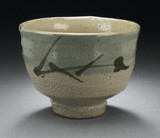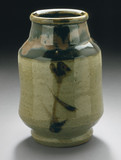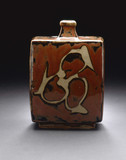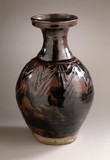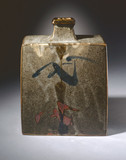Hamada Shōji was one of the first group to be named Living National Treasure (Intangible Cultural Property, ningen kokuhō 人間国宝) in 1955 for his fostering of mingei arts, in particular ceramics. His work is particularly admired for its balance and proportion. He drew from a broad swath of ceramic forms and glazes, Japanese, Okinawan, Chinese and Korean. He was one of the founders of the Mingei movement, alongside Yanagi Sōetsu and Kawai Kanjirō. He moved to and later promoted the town of Mashiko in Tochigi Prefecture, as a center for study of mingei style, where to the present, aspiring craftspeople can go to learn the art of ceramics. Hamada's work was primarily functional and often adapted traditional utilitarian forms from Okinawa. He left a legacy with the persimmon and iron glazes that he developed and popularized. Some works he would overglaze or resist glaze using wax, a technique found in Tang Dynasty (618-907) Chinese ceramics. With Bernard Leach, Hamada visited various countries abroad starting in the early 1950s to promote mingei pottery, and had a strong influence on American potters of the time.
Shōji Hamada
17 records
Include records without images
About this artist
